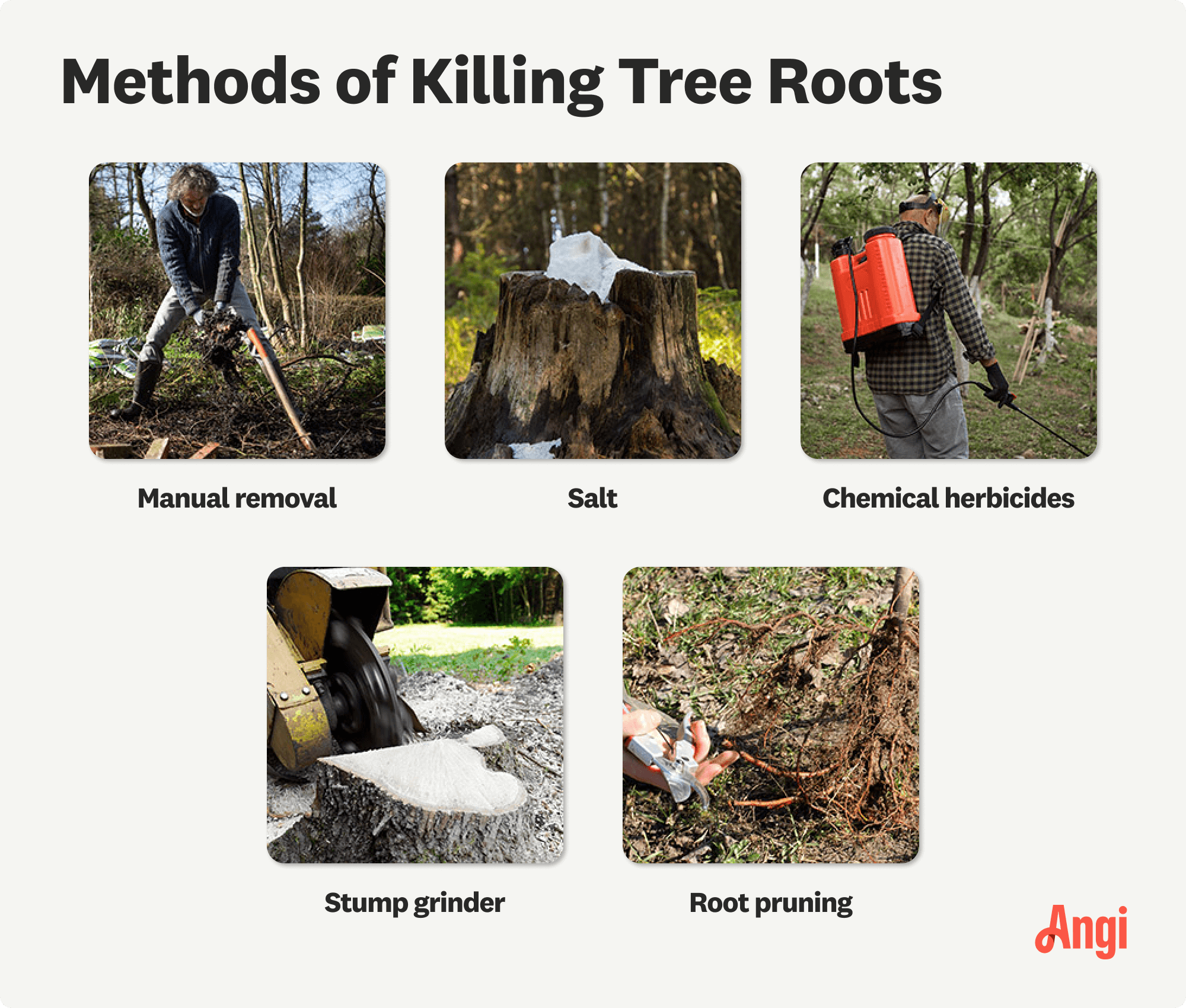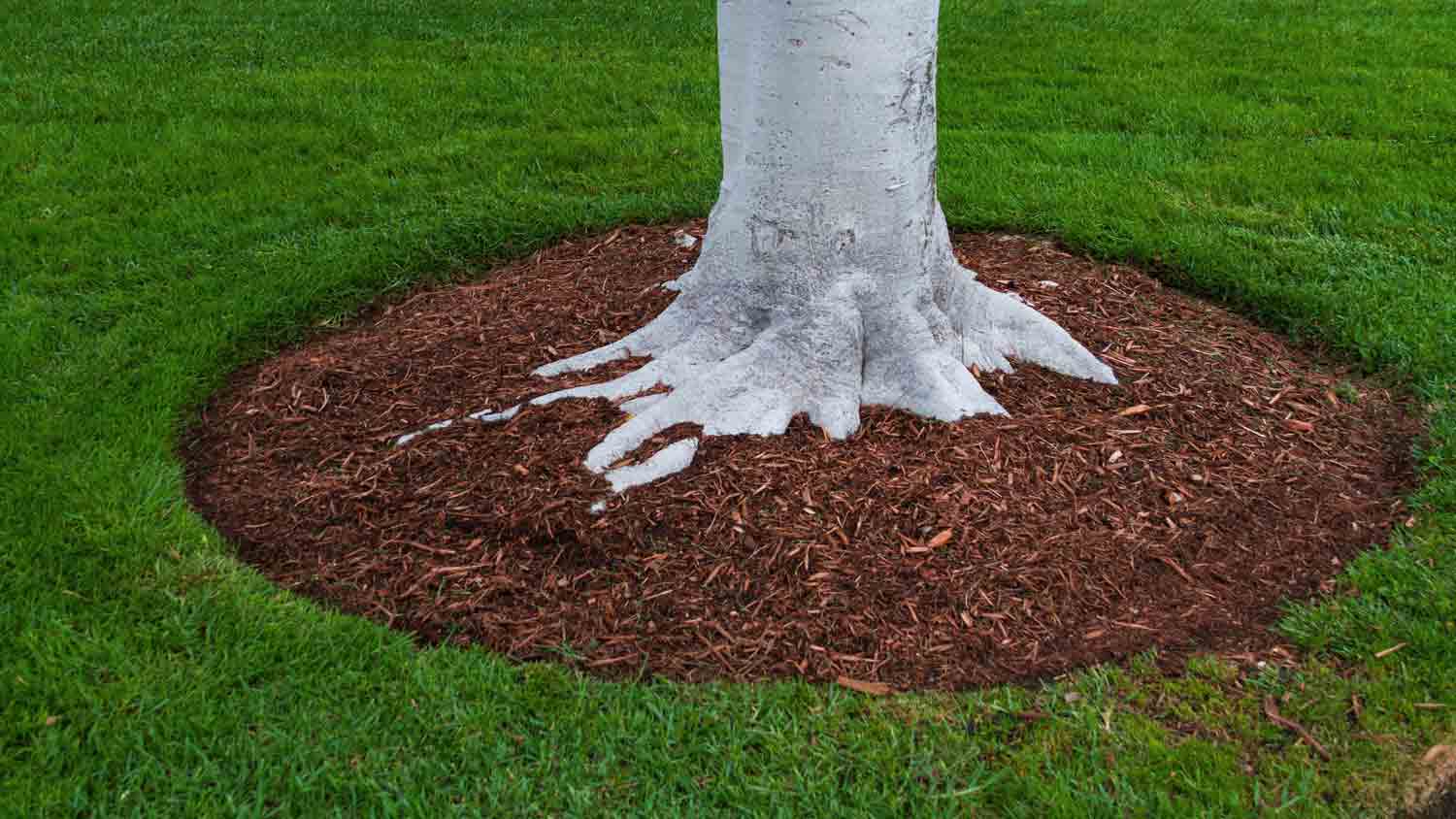
How much does it cost to rent a chainsaw? Whether it’s for cleaning up your yard or cutting firewood, learn what options are available and what you’ll pay.
Learn how to address the root cause of exposed tree roots


Trees bring shade and beauty to a home’s landscape, but when their roots emerge above the soil, they can become a serious hazard. Learning what to do with tree roots above ground is an essential tree maintenance step. At worst, tree roots can damage your home’s foundation and hardscaping; at best, they become a tripping hazard or an eyesore. If you’re wondering what to do with tree roots above ground, here are the best ways to address the issue.


One simple, safe, and very effective way to cover up tree roots is by a DIY mulching job around the tree’s base. Clear the remaining grass around the tree base (do not mow over the roots) and replace it with a dense mulch layer. This method provides cushioning and insulation for the roots, deters foot traffic, and eliminates the need for mowing. Opt for shredded or chipped hardwood bark mulch, avoiding stained varieties that may contain harmful dyes potentially damaging to tree roots.
When covering tree roots, you can consider adding a thin layer of topsoil, but it's important not to overdo it. Keep the layer light—no more than 1/2 inch thick—to prevent suffocating the roots.
Planting ground cover plants will help cover up tree roots and beautify the area. Some of the best groundcover plants to consider are taller varieties that don’t need regular mowing, such as ajuga, lily of the valley, lungwort, and wild violets.
While ground cover plants can do a great job at camouflaging tree roots, you should avoid planting new grass over tree roots. Running your lawnmower over the roots can damage and hurt the tree, leaving it vulnerable to pests and disease. Plus, it can wreck your lawn mower’s blade.
Exposed tree roots are starved for oxygen, which you can help replenish by regularly aerating the soil around the tree. This method can prevent the protruding roots from becoming worse and potentially prevent them from breaking through the soil’s surface in the first place. Aerating your lawn at least once a year is the goal, or twice a year for heavily compacted or clay soils.
Overwatering around your tree can cause soil erosion and suffocate the tree’s roots, causing them to come to the surface, so it’s important to avoid it. Overwatering can also lead to root rot, which can spread to other plants, so it’s imperative to address it or remove the affected tree if the disease has progressed far enough. If you’re not sure whether to remove the tree, consult a certified arborist to inspect it and determine the best course of action.
If you’re wondering what to do with tree roots above ground, you’ve likely considered simply cutting and removing the roots in question. However, you can only safely remove roots that are no larger than 3 inches in diameter. It’s easy to get carried away and damage or kill the tree, so it’s best to avoid pruning and consider other options instead.
Exposed roots can be more vulnerable to pests, fungi, or tree diseases that thrive in damaged or weakened plant tissue. Regularly inspect the roots for signs of rot, insects, or unusual growths. Early detection can help prevent the spread of disease to the rest of the tree. If you notice any signs of disease or decay, consult an arborist for treatment recommendations.
If tripping over the roots is your primary concern and the tree isn’t posing a hazard to your home, you might consider building a small fence or border to keep out foot traffic. Avoid digging directly in the tree’s root zone, which goes as far as its canopy, as this action can cause irreparable damage and eventually kill the tree.
If exposed roots are in a high-traffic area, such as near a walkway or yard, consider creating a pathway over or around them. Installing a stone or gravel pathway can prevent people from walking directly on the roots, reducing the risk of compaction and damage. A raised pathway made of decking or stepping stones can be both functional and visually appealing, keeping the tree’s roots healthy and out of the way of foot traffic.
In some cases, you can build a raised planting bed over the exposed roots to provide the tree with extra protection while allowing you to grow shallow-rooted plants. Be cautious, though—only add a few inches of soil, as too much can suffocate the tree roots and disrupt the tree's natural water intake.
Exposed tree roots can be a sign of poor drainage, especially if the tree is in a low-lying area prone to becoming waterlogged. If water tends to pool around the tree base, consider improving drainage by creating small channels or installing French drains to direct excess water away. This option can help prevent root rot and encourage healthier, deeper root growth over time.
Unfortunately, in some cases, the best way to handle a tree’s roots above ground is to remove the tree altogether. Tree roots create a tripping hazard, plus they can seriously damage a home’s foundation and other structures if they’re growing too close.
Once the tree is cut down, it’s also necessary to stop the stump from growing by fully removing it, as new growth can sprout and continue to support the root system. Unless you have the proper permits, experience, and safety gear, you should always hire a local tree maintenance professional to handle the tree felling. However, you can save money by removing the stump on your own, either by investing in the cost of renting a stump grinder or killing the stump and digging up the roots.
If you remove the tree, remember to be mindful of where you plant the next one. Avoid slopes and areas that are prone to erosion, as soil can easily get washed away and expose the roots of the new tree over time. Also, trees with large root systems, like oaks and maples, should always be planted far away from homes and other structures to avoid problems in the future.
While DIY methods can effectively cover exposed tree roots, options are limited. A local tree maintenance specialist is your best bet for finding the best solution to your tree’s exposed roots. Schedule periodic inspections by an arborist (most tree services have them on staff) to assess tree health, manage root growth, and address any potential issues before roots emerge above the ground.
From average costs to expert advice, get all the answers you need to get your job done.

How much does it cost to rent a chainsaw? Whether it’s for cleaning up your yard or cutting firewood, learn what options are available and what you’ll pay.

Find out how much it costs to plant a tree based on the number of trees, their size, where you want to plant them, and DIY versus professional costs.

The cost of tree stump removal depends on size, removal method, location, and more. Our guide will show you how much stump removal costs.

Grinding a tree stump requires a chainsaw, heavy-duty equipment, and a strategy for cleaning up debris. Keep reading to learn how to use a stump grinder.

Trees absorb carbon dioxide, and fight pollution and global warming, not to mention create oxygen, something every living thing needs to survive.

Transplanting large trees is typically the work of professional tree movers and arborists. However, you can move small existing trees as a DIY project.